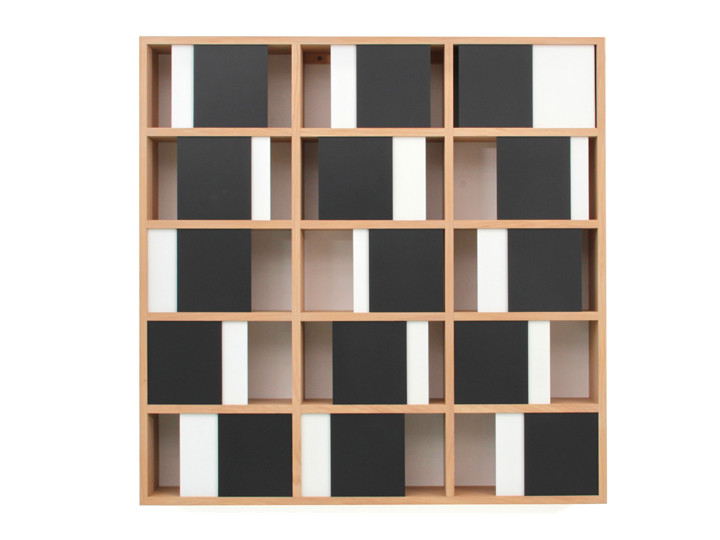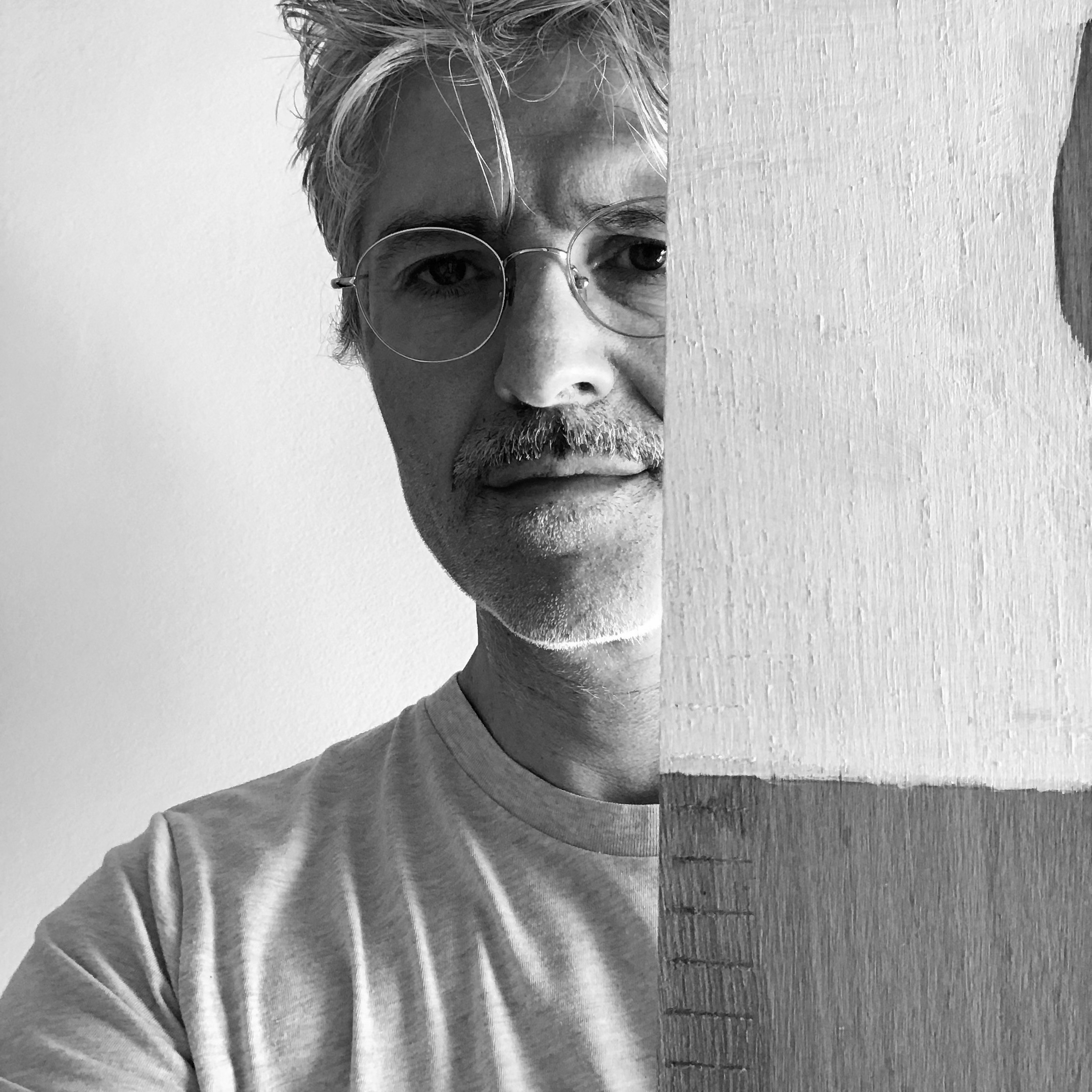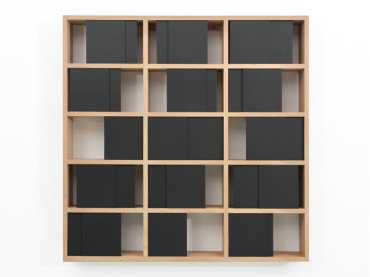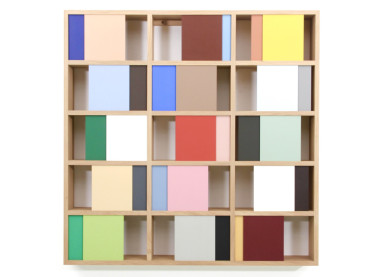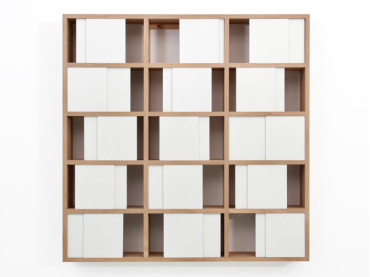Wall-mounted bookshelf model Cache-Cache black & white
-
Jérôme Marroc-Latour
-
JL Studio
- JLS048 On demand. Delivery time 8-10 weeks
From intimacy to sharing, a dream of harmony
With this object, I wanted to evoke childhood, its games, its imagination, and its mysteries. I also wanted to talk about encounters and diversity. There is what we naturally share and what we don't always see immediately, this game of “Cache-cache” (French translation for hide-and-seek) that engages with others and with ourselves.
Jérôme Marroc-Latour
With its immutable structure, the "Cache-cache" library speaks of what brings us together, of a common history. The diversity of the panels, of the objects sheltered, tells the uniqueness of our paths and encounters. A timeless game, certainly rooted in childhood, but one that each of us reproduces more or less consciously with our desires, dreams, and memories. Fictions, reality, 'I', 'we'... The object establishes an instant and playful dialogue with whoever appropriates it.
The Cache-cache library black and white comes with to sets of door, one white and one black as you can combine it as you want !
The Cache-cache library is also available in a polychrome hand painting limited edition. No back. Can be directly mounted on the wall
| Dimensions | H 113 cm, W 113 cm, D 15,7 cm. Inner dimensions : H 20 cm, W 35 cm, D 14,5 cm. (from track)) |
| Style | Contemporain Neuf |
| Origin | France |
| Fournisseur | jl Studio |
| Structure | Solid oak, made of 15 identical compartments closed with two sliding panels in painted medium. |
Jérôme Marroc-Latour
Between Industrial Aesthetics and Modernist Inspiration
Jérôme Marroc-Latour was born in Marseille to a stevedore father and a homemaker mother. His first aesthetic impressions were shaped by the towering cranes, massive gantries, shipyards, and vessels of the city’s autonomous port. It was only after several stays in New York and Tokyo that his fascination with large urban landscapes and their diversity truly took hold.
Since adolescence, he has painted, encouraged by his paternal great-uncle. His early artistic influences included Cézanne, Matisse, and Gauguin. Soon, his interests expanded to African tribal sculptures, the works of Brancusi, and, more recently, Oscar Tuazon. The creations of Charlotte Perriand and her expansive, nature-inspired vision opened his eyes to modern design.
The Bauhaus movement, the works of Anni and Josef Albers, and the architecture of Le Corbusier, Oscar Niemeyer, and the more accessible designs of Fernand Pouillon all became guiding lights. As a self-taught and instinctive creator, Marroc-Latour has forged a path balancing radicalism with a pursuit of harmony.

